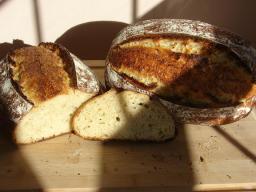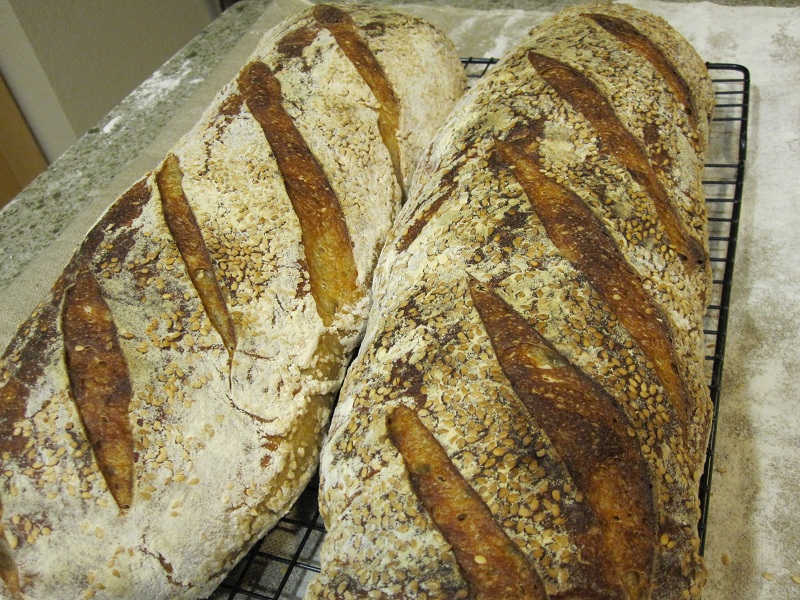A question arose recently about the use of a couche for proofing bread. Here is a demonstration of how to use a linen couche.
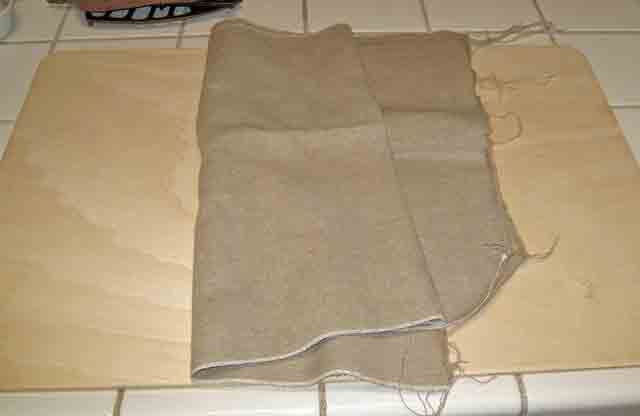
Step 1: Mis en place
Equipment needed: Proofing board and a length of baker's line.
In the bakery, loaves that are not proofed in baskets are proofed on wooden boards covered with baker's linen. After the loaves are placed on the linen between folds, they are covered with heavy plastic sheeting. The boards are then shelved in rolling racks which are usually themselves covered with plastic.
Baker's linen is an ideal material on which to proof loaves. It is relatively inexpensive. It is flexible. It is inherently non-stick. Even when proofing loaves made with high-hydration, somewhat sticky dough, flouring of the linen is generally not needed. The linen absorbs some moisture from the surface of the loaves which makes them easier to score cleanly.
Baker's linen can be purchased from King Arthur Flour or from TMB Baking (affiliated with the San Francisco Baking Institute). The latter's prices are lower. (I have no financial association with either.)
At home, we are usually only proofing 2 to 4 loaves at once, so a simpler procedure can be followed.
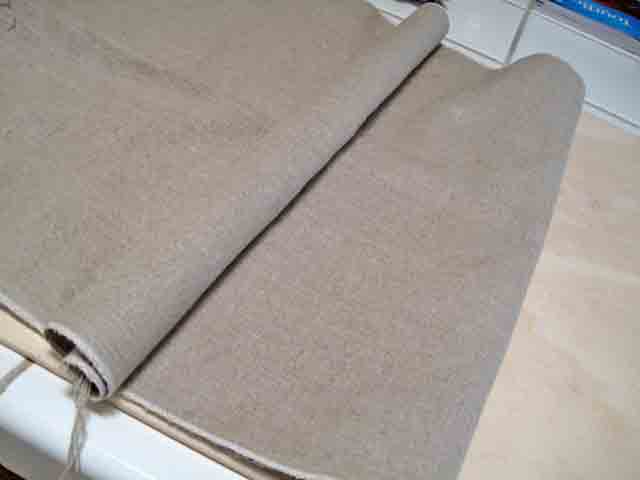
Step 2: Preparing the couche.
Cover the board with the linen. Fold back one end, and roll it up to form a supporting structure for the first loaf place on one end of the couche.
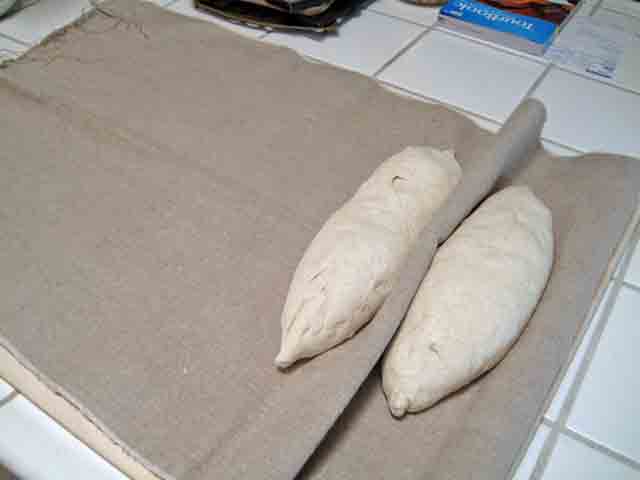
Step 3: Placing the loaves on the couche.
The loaves are placed on the couche. Note the roll of linen supporting the right hand side of the loaf on the right and the fold of linen between the two loaves.
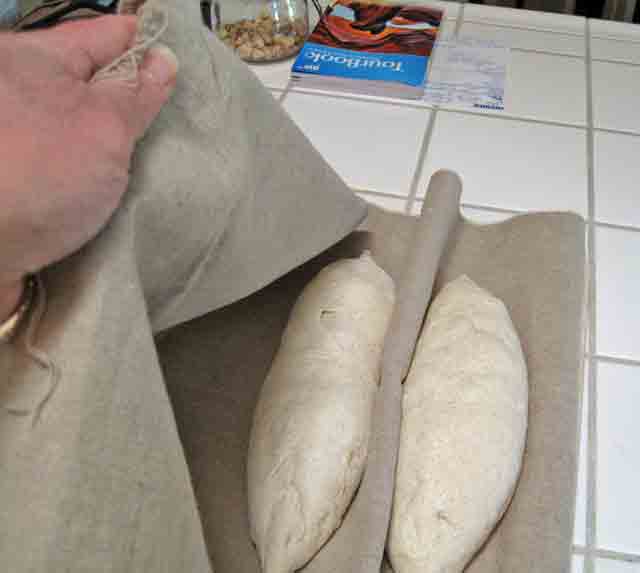
Step 4: The left hand end of the couche is brought up and over to cover the proofing loaves.
Any excess linen can be folded back over to cover the loaves with another layer of linen.
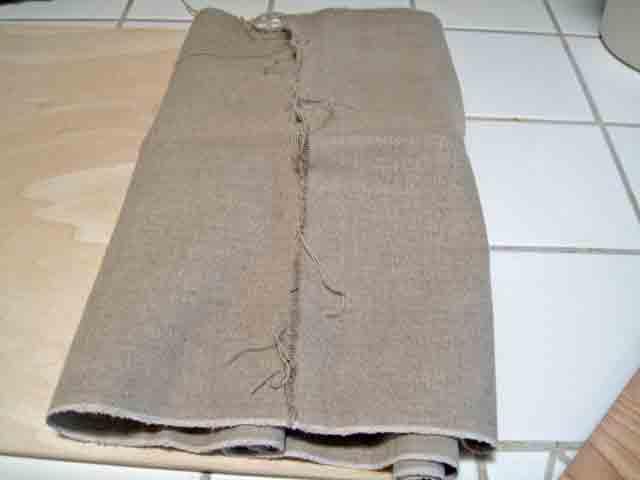
Step 5: The covered loaves are left to proof until ready to bake.
I generally prefer proofing loaves seam side up. The exception is loaves topped with seeds. When transferring loaves proofed seam up with a transfer peel, the loaves must be flipped over on the couche before being transferred to the transfer peel, then to a peel for loading onto a baking stone.
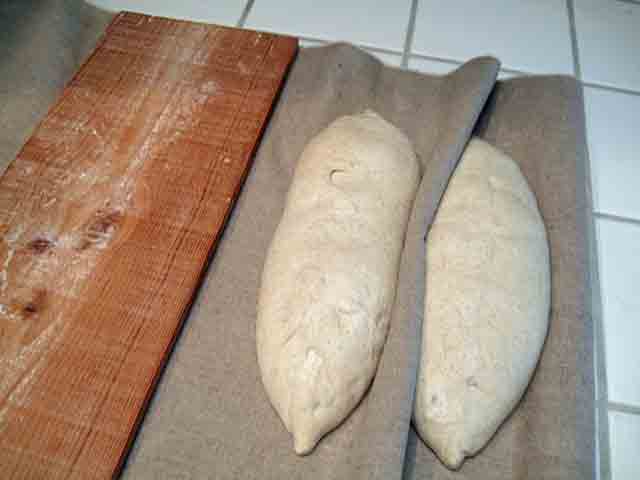
Step 6: Uncover loaves. (Seen with transfer peel)
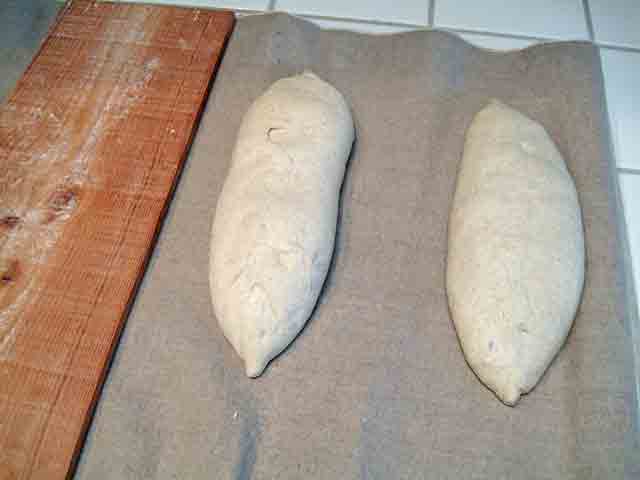
Step 7: Pull linen from left end to flatten out the folds
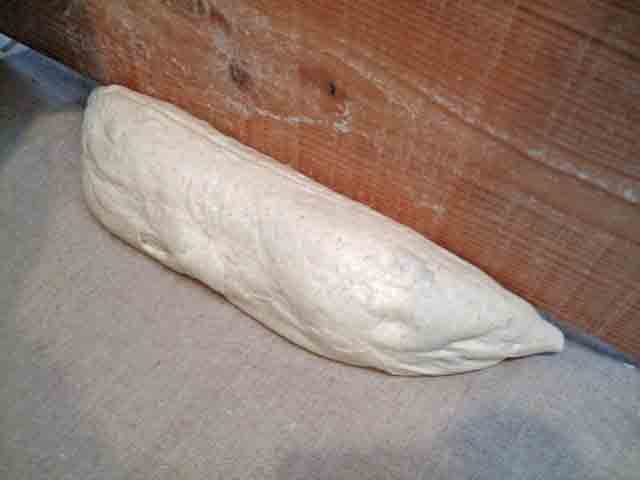
Step 8: If loaves were proofed seam side up, flip them over so the seam is down.
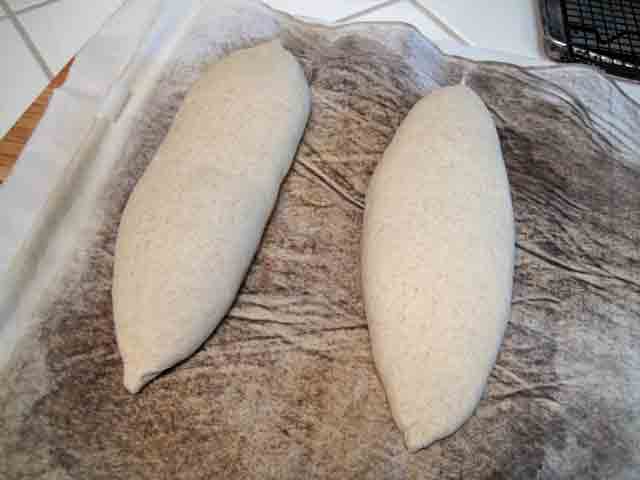
Step 9: Transfer loaves to a peel.
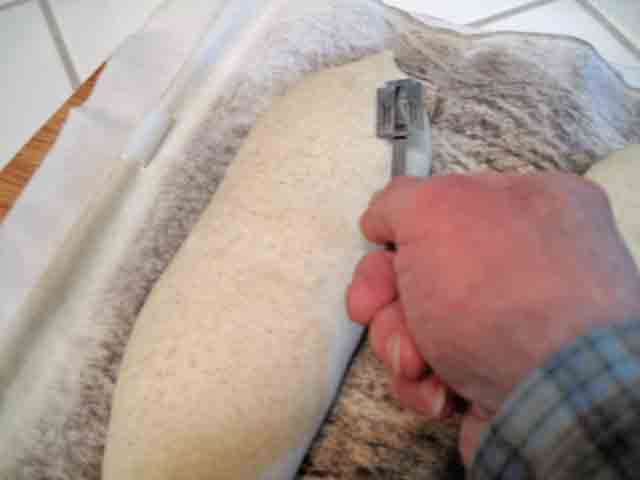
Step 8: Score the loaves.
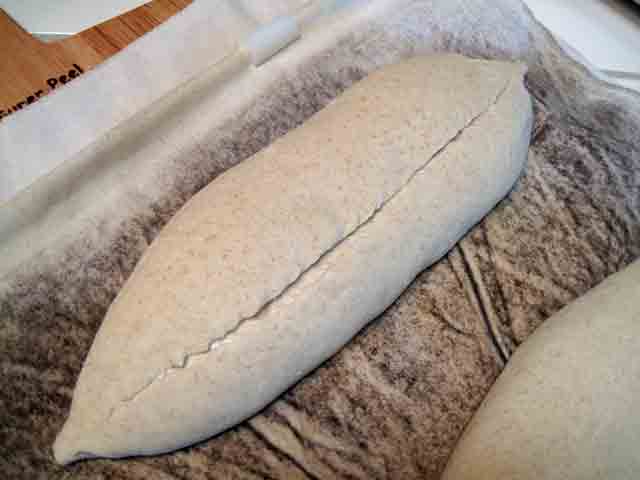
Scored loaves, ready to load.
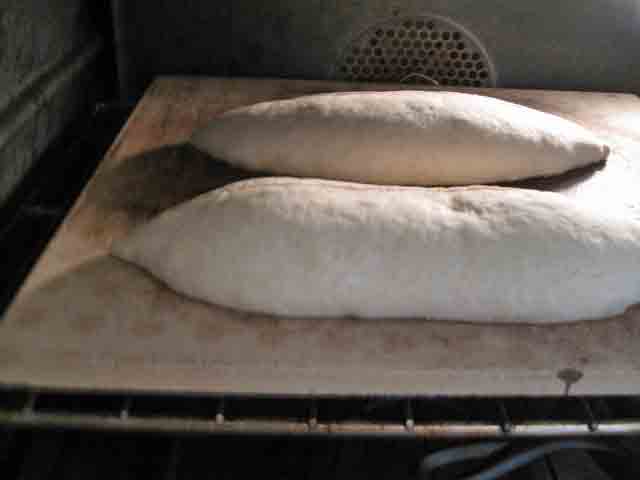
Loaded onto the baking stone.
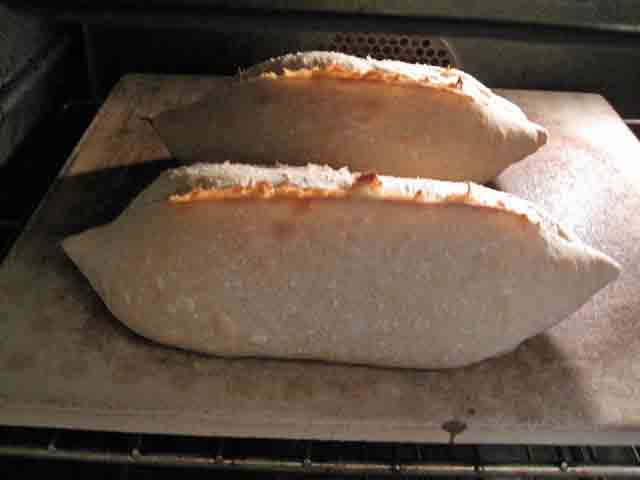
Twelve minutes into the bake. Good oven spring. The cuts have opened nicely with good ears. The loaves have just started to color. Time to vent the steam.
After another 13 minutes baking and 7 minutes resting in the turned off oven with the door ajar ...
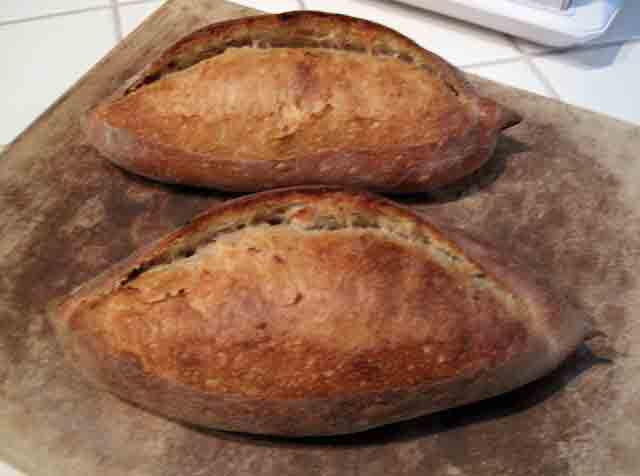
San Joaquin Sourdough. My last bake of 2012.
Happy Baking to you all in 2013!
David


















